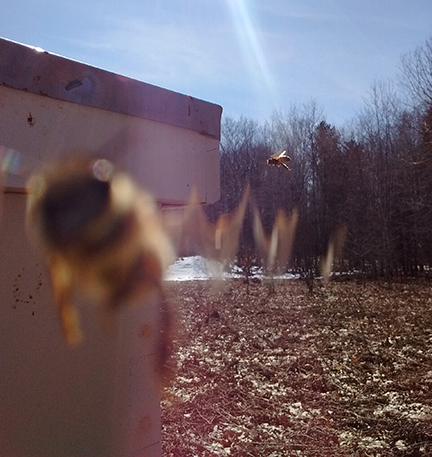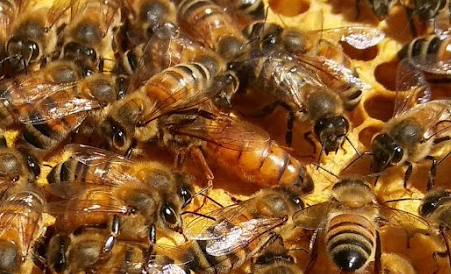At this point you probably have a pretty good idea of your success this winter. If you don’t, wait for a 40 + degree day and go and check. Pop the top, check the stores and tally your wins and losses. Although, there is more to be learned than your success percentage, the WHY of the successes and failures needs to be found so you know what you did correctly and what you need to change going into Winter 2016.
Whether you used moisture control or not, check out the signs of damage due to moisture, look for mold, water marks on the inner cover or crystallized honey in the cells. Regardless of whether the hive you are checking survived or not, it’s good to know if your moisture control method was effective or if you need to change course going forward.
Look at the food stores, not only how much there was but where it was located. If you are running 10 frame boxes and there were two full frames of honey on the edges of each box, you might want to think about running 8 frames or adding more honey near the center when preparing future hives for Winter.
Of course, look for signs of disease and/or dysentery in both surviving hives and dead-outs. If you think there was a chance of pathogen induced demise, get rid of the equipment and give your next colony a clean start. Remember, if you went into Winter with a mite problem, you had the deck stacked against you, so check for mites and check population levels. Consider splitting hives that overwintered with a large population of bees, as this probably means they were successful in battling mites the year before.
In your head or on a notepad, rate the survivors on a set of issues that you deem most important, such as, 1. Surviving Population 2. Food Stores Remaining 3. Cleanliness of Hive (amount of dead bees cluttered near the entrance). The hives that rate well across all of the criteria should be split and propagated, as they will give you the genetics needed to survive consistently and prosperously in your area of the world.
Rate the dead-outs on the same criteria and see where any commonalities exist. If all of your dead hives ran out of food, you know to give more next Fall, if the entrance was clogged with dead, moldy bees, you know to put in an upper entrance and moisture control the next go-round. If the number of dead bees was small and clustered in the center, they just weren’t strong enough going in to Fall, and probably should have been combined with another hive to hike up the probability of survival.
Through this calculated and measured method of Spring Checks, we can increase our chances year after year, helping not only our individual bees and bee yards, but the local feral genetics as well.
Lastly, please don’t breathe the sigh of relief and forget about your bees, many a strong hive have died in March due to starvation, if they are low or out of food stores, FEED FEED FEED. The nectar won’t be flowing here in Michigan for at least another Month, they need your help until then.
Pat yourself on the back, the worst is behind us and we have the active and fun months in the beekeeper’s year ahead.


